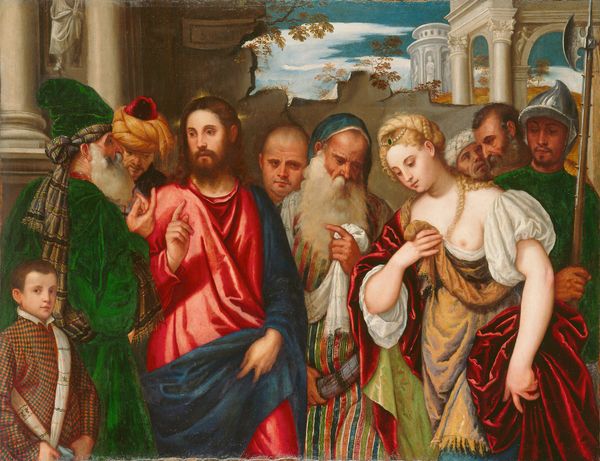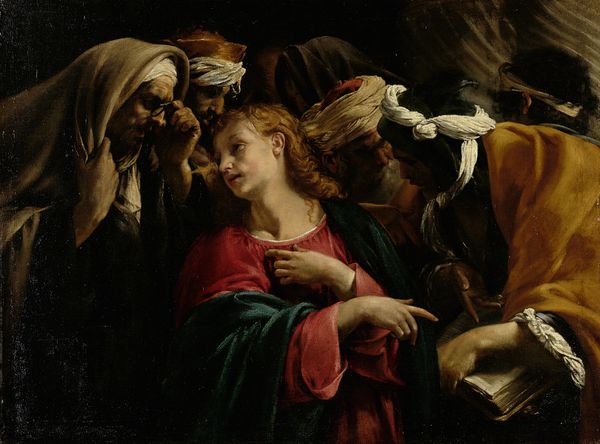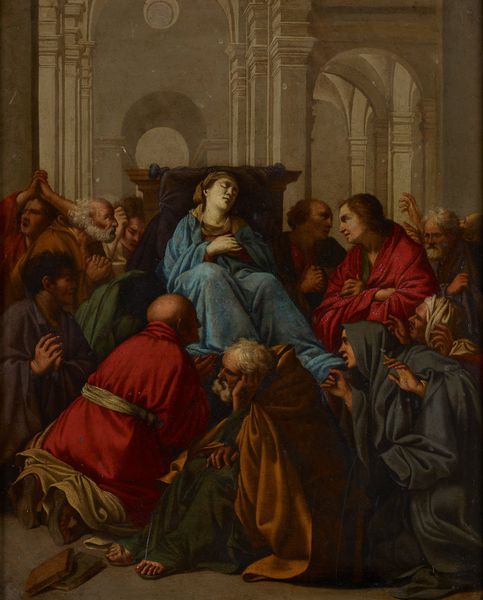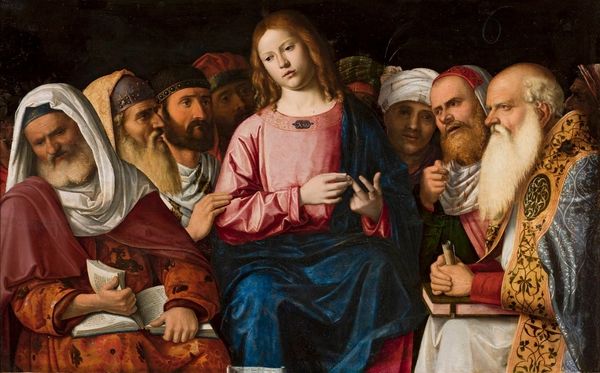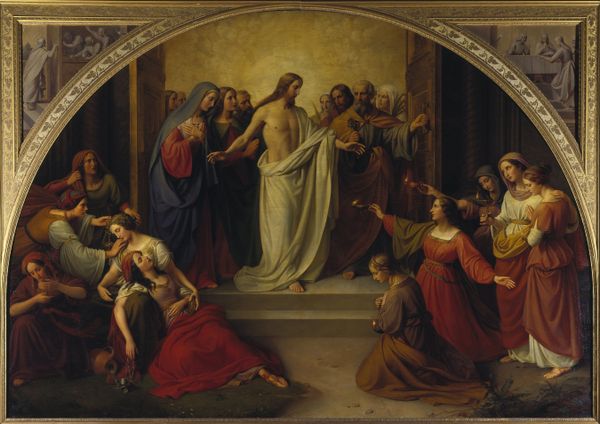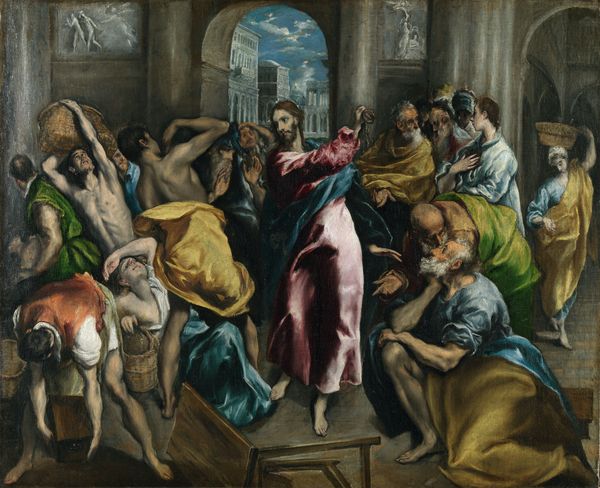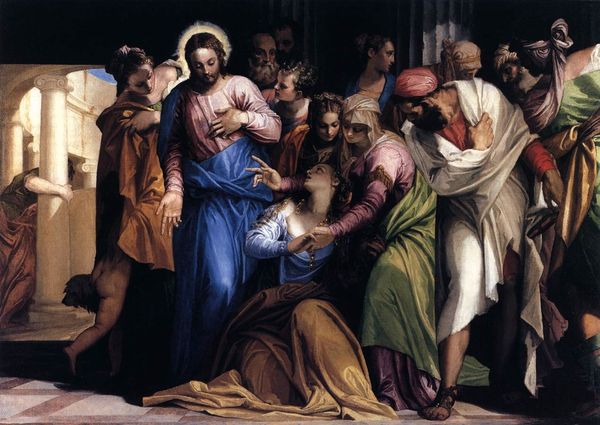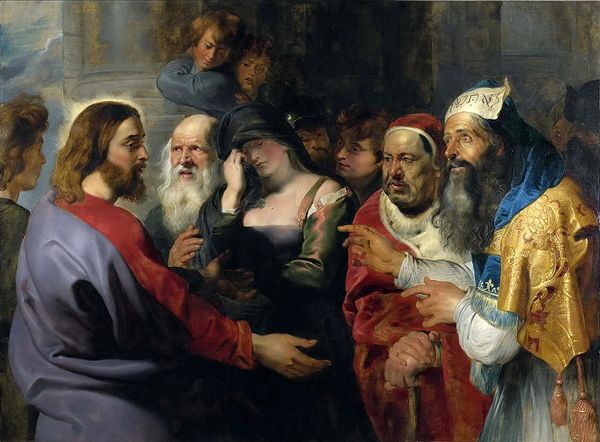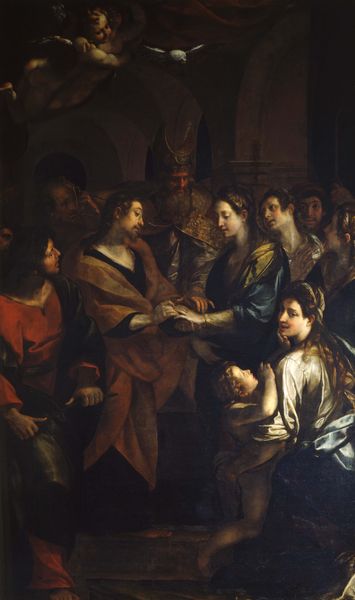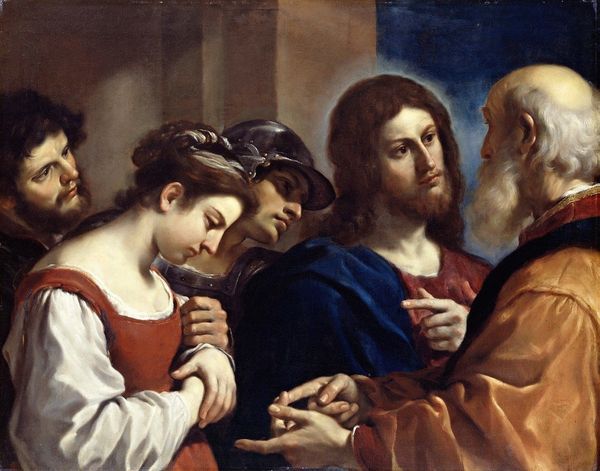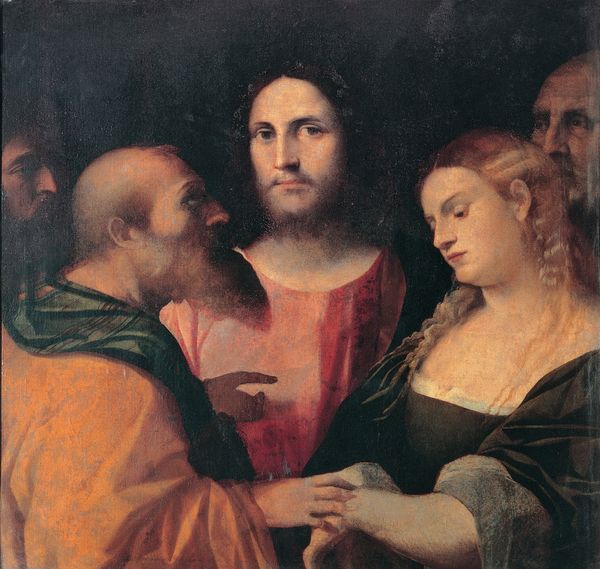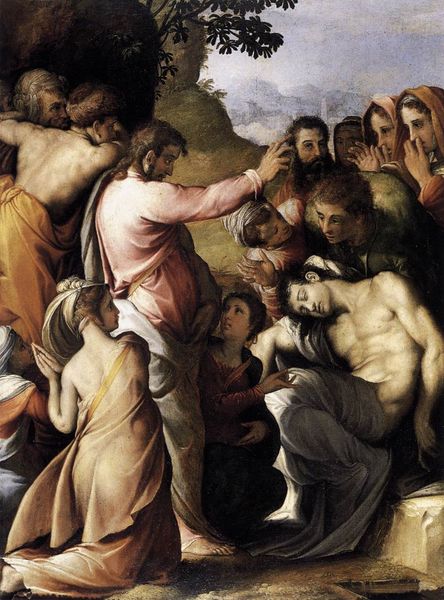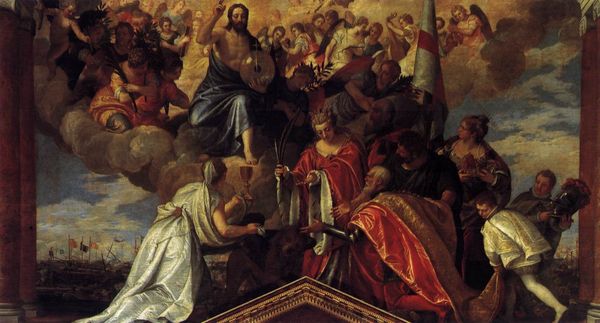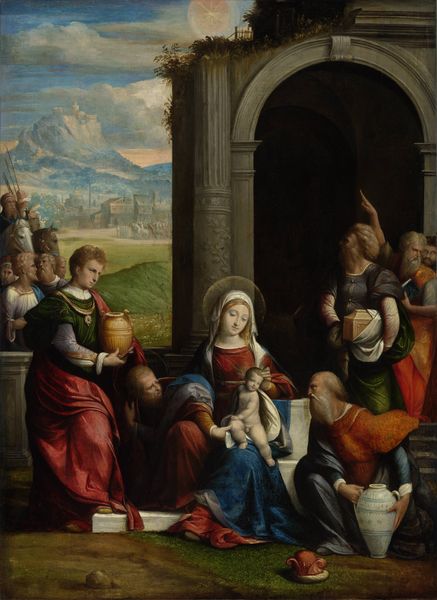
painting, oil-paint
#
high-renaissance
#
painting
#
oil-paint
#
figuration
#
jesus-christ
#
christianity
#
history-painting
#
italian-renaissance
Dimensions: 126 x 99 cm
Copyright: Public domain
Editor: Here we have Lorenzo Lotto’s “Christ and the Adulteress,” an oil painting created around 1528. The scene is crowded and, honestly, a bit chaotic. The textures seem incredibly varied. What do you see in the formal arrangement of this work? Curator: The most striking aspect is, undeniably, the dynamism created by the composition itself. Consider the figures, arranged in a dense cluster. The directional lines are sharply drawn around Christ, almost forming a vortex, focusing our gaze. Lotto uses contrasting colors—note the red of Christ’s robe against the green and ochre of the surrounding figures—to highlight Christ as the focal point, set against that central space which helps enhance legibility. Are you perceiving these deliberate contrasts? Editor: Yes, the use of color definitely emphasizes Christ. And I notice how the lines of sight from the other figures all seem directed at him, or at the woman. But how do you interpret the use of light here? It feels very dramatic. Curator: Precisely. Look at the intense contrasts between light and shadow, particularly on the faces. Lotto manipulates light to sculpt forms and amplify the emotional intensity. The highlights accentuate the figures’ expressions, rendering their emotions legible, drawing us into the core drama of the scene. Editor: So it’s almost like Lotto is using the visual elements to stage the story, not just depict it. Curator: Indeed. Lotto's careful use of line, color, light, and texture transforms a biblical narrative into a compelling drama with a profound moral message. Through visual means alone, the painting allows a multifaceted engagement. Consider that question: how can visual rhetoric accomplish narrative in ways that written texts can't, or don't? Editor: That's fascinating. I’ll definitely be thinking about that! Thanks for sharing your insights on how Lotto uses all these compositional and formal elements to shape the narrative.
Comments
No comments
Be the first to comment and join the conversation on the ultimate creative platform.
